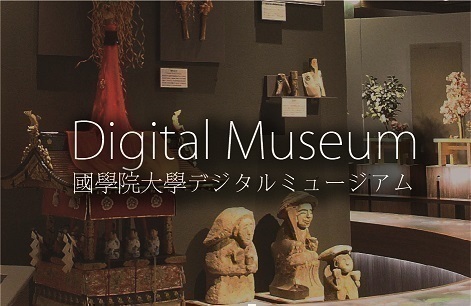- トップ
- Encyclopedia of Shinto
- Ōyashimaguni
Encyclopedia of Shinto
| Main Menu: | |
| Links: |
詳細表示 (Complete Article)
| カテゴリー1: | 2. Kami (Deities) |
|---|---|
| カテゴリー2: | Kami in Classic Texts |
| Title | Ōyashimaguni |
| Text | (Kojiki)(Nihongi) "Great-Eight-Island-Land," a poetic epithet for Japan noted in the early classics Kojiki and Nihongi. According to Kojiki, when Izanagi and Izanami stood on the floating bridge of heaven and dipped down the heavenly spear, the foam that dripped from its tip became the island of Onogoroshima, where the two descended to become husband and wife, after which they produced the land of Japan. The prefix Ō is an auspicious description meaning "great," while ya (eight) is a "sacred number" likewise associated with good fortune, with the result that the various classical sources provide names for islands based on this number. The main text of Kojiki and Nihongi, and five of the latter's ten "alternate writing" accounts differ slightly in regard to the names given to the eight islands. According to Kojiki, after bearing the "leech child" (Hiruko) and the island of Awa, both of which were abandoned and not counted among their official children, Izanagi no mikoto and Izanami no mikoto bore eight islands called (1) Awaji no hono sawakeshima (Awaji Island); (2) Iyo no futanashima (Shikoku); (3) Oki no mitsugojima; (4) Tsukushishima (Kyūshū); (5) Ikishima; (6) Tsushima; (7) Sadogashima; and (8) Ōyamato Toyoakizushima. These eight are referred to by the unique collective name "great eight island land," while the ninth (Kibi no Kojima) and subsequent islands were included in a separate series. In contrast, the main text of Nihongi states that Izanagi and Izanami first gave birth to the placenta, which was called the island of Awaji no Shima, followed by (1) Ōyamato no Toyoakitsushima, (2) Iyo no Futanashima; (3) Tsukushishima; then the twins (4) Oki no Shima and (5) Sadogashima, followed by (6) Koshi no Shima; Ōshima; and (8) Kibi no Kojima. These eight were called the "Great Eight Island Land," and followed by a separate series including the islands of Tsushima and Iki. The word "placenta" (ena) has etymological ties to the word "elder brother" (e), and carries with it reference to the miscarried first child, with the result that it is associated with the "leech child" and the island of Awaji in the Kojiki account. The five variants ("alternate writing") found in Nihongi limit their listings to the eight main islands, but with the exception of the first variant, the "placenta" or first child is listed as Awajishima, followed by Ōyamato Toyoakitsushima, and Iyo Futanashima. The order of the remaining names differs in each variant account, but they include Tsukushi, Oki, and Sado, followed by the final two islands (seventh and eighth) selected from the group composed of Koshi no Shima, Tsushima, Ikishima, Ōshima, and (Kibi no) Koshima. The eighth "alternate writing" states that Oki no Shima and Sadogashima were the sixth and seventh children, born as twins; this account is also unusual in including Onogoroshima with the "placenta." In sum, the expression "Great-Eight-Island-Land" cannot in the strict sense be called a name for the entirety of Japan, but the ordinance for the promulgation of the Yōrōryō codes describes the emperor with the expression Akitsukami to Ōyashima Shiroshimesu Sumera Mikoto ["Manifest kami and lord of the great-eight-islands"], indicating that the name Ōyashima was used as a general appellation for Japan. Further, the "eight islands" include the names of some locales, like Koshi no Shima which appear not to be islands at all; some scholars counter that this name Etsu is not a reference to what is now known as the Hokuriku area (also called Echizen and Echigo, referring to that part of northern Japan on the Japan Sea coast), but rather a name for the island of Hokkaido, where the Etsujin-namely, the Ainu people-lived. Further, Sendai kuji hongi, which is believed to draw upon Kojiki, makes no mention of the island of Sado, and instead adds a "Kumaso no Kuni" in distinction from Tsukushi within its listing of the "great-eight-islands." This fact has led some commentators to suggest that at one time, Koshi or Kumaso was specially included within the great-eight-islands as a way of referring to regions of yet-unpacified peoples. Some debate also remains regarding whether the two deities "gave birth" to the land or "made" it, but it is also possible to view the two as equivalent, inasmuch as they are both metaphors related to the work of production. After Izanagi and Izanami produced the "great-eight-island-land," they went on to produce six other lands, including Kibi no Kojima (also called Takehikatawake), Azukishima (also called Ōnodehime), Ōshima (also called Ōtamaruwake), Himeshima (also called Amehitotsune), Chika no Shima (also called Ame no Oshio), and Futabi no Shima (also called Ame no Futaya). One theory suggests that these six islands were related to the course taken by early envoy ships sent from Japan to China. -Kobori Keiko, Yumiyama Tatsuya |




